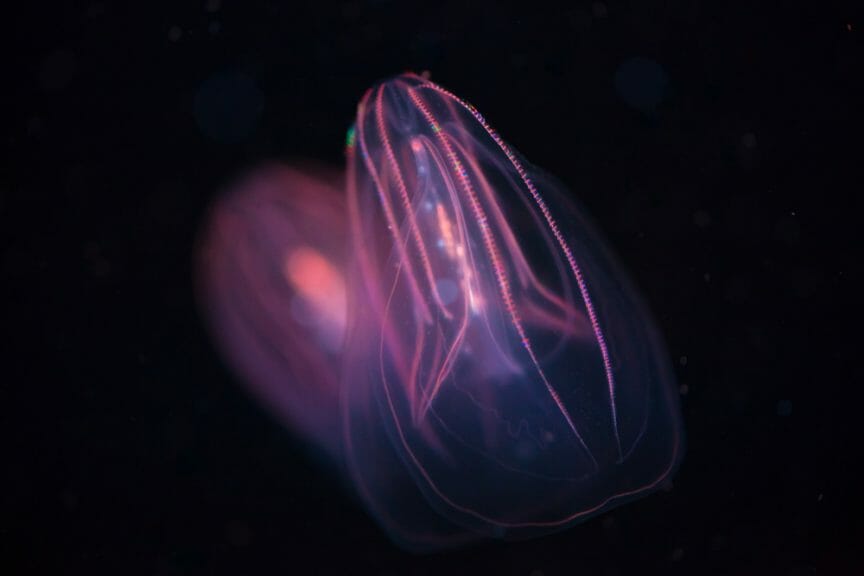Hold on to your hats, folks, because we’ve got some mind-boggling news coming your way! In a recent jaw-dropping study published in the prestigious journal Nature, a group of trailblazing researchers believes they’ve cracked the code on the identity of Earth’s very first walker—an animal that roamed the planet a staggering 700 million years ago.
Brace yourselves, for it seems our inaugural globetrotter might have been none other than a cunning comb jelly, also known as a ctenophore! These oceanic predators, armed with their stunning beauty, have been scouring the watery depths for delectable prey since time immemorial, as revealed in a press release from the brilliant minds at the University of California Berkeley.
Now, you might mistake these comb jellies for their gelatinous counterparts, jellyfish, but hold your seahorses, folks, because there’s a world of difference between the two! These wondrous creatures elegantly navigate their aqueous realm not through tentacles, but by employing their marvelous cilia. Found in seas spanning the globe, these ethereal beings continue to play a vital role in the intricate tapestry of marine life.
As UC Berkeley’s very own Professor Daniel Rokhsar, a mastermind co-author of this groundbreaking study, sagely put it, “The elusive common ancestor of all animals likely trod this Earth 600 or 700 million years ago. Now, painting a vivid picture of these ancient soft-bodied creatures poses quite the challenge, considering they left no direct fossil traces. However, by drawing comparisons across the vibrant spectrum of existing animal species, we can catch tantalizing glimpses into our shared lineage.”
Now, dear readers, prepare yourselves for a heated debate that has raged on for ages—sponge versus ctenophore: who takes the crown as the true primordial pioneer? Our esteemed university sheds light on this riveting question that has had scholars locked in intellectual combat. While sponges may have taken an early lead due to their humble yet distinct characteristics, this groundbreaking research suggests that they were second in line, trailing behind the remarkable ctenophores.
How, you may wonder, did these audacious scientists reach such a mind-bending conclusion? Well, my friends, they delved deep into the intricate realm of chromosomes, meticulously examining how genes were arranged within these magnificent creatures’ genetic blueprints. Lo and behold, the chromosomes of these ctenophores stood out like a shooting star against a midnight sky, distinct from those of sponges, jellyfish, and other captivating invertebrates. This striking disparity led the ingenious researchers to hypothesize that the ctenophore lineage may have branched off either much earlier or much later than their fellow animal compatriots. And so, the quest for answers continued.
The plot thickened when these tenacious scientists compared the chromosomes of these mesmerizing creatures with those of diverse animals and even non-animals. A eureka moment ensued when they unraveled the intricate puzzle before them—ctenophores and non-animals shared specific gene-chromosome combinations, while sponges and other animals boasted a chromosomal arrangement as unique as a unicorn’s hoof.
What does all this scientific sorcery mean for us, dear readers? Well, it turns out this groundbreaking revelation is crucial for comprehending the very essence of animal behavior. From our humble selves to the captivating creatures we share this planet with, this newfound understanding peels back the layers of our origins, shedding light on how we traverse, nourish ourselves, and perceive the vivid tapestry that is our immediate environment. It’s a revelation that sends chills down our spines, for it unlocks the secrets of our collective past, echoing through the eons and resonating within every fiber of our being.






